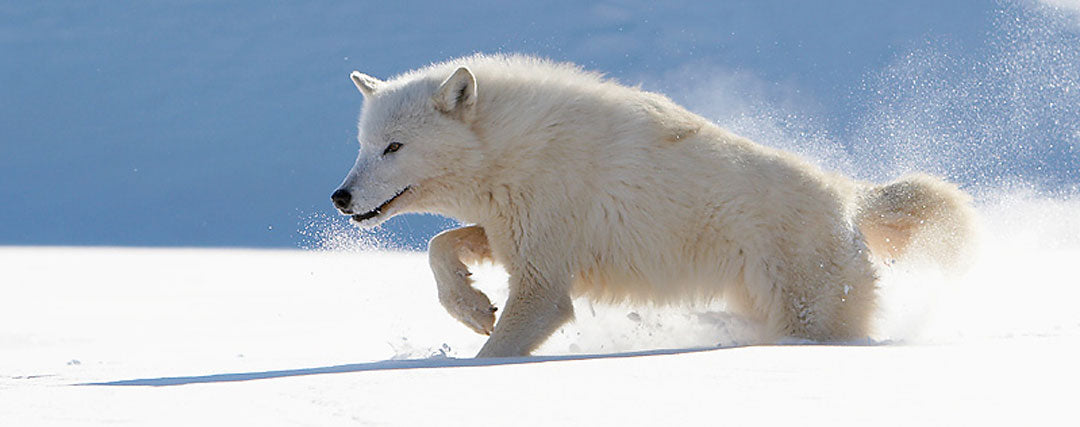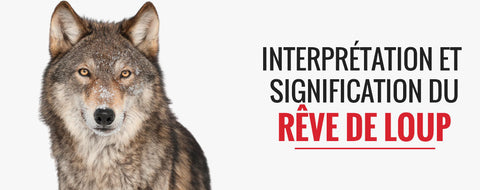
White wolf: a robust animal
of reading - words
The white wolf, or Arctic wolf (Canis lupus arctos) is a carnivorous mammal that belongs to the subspecies of canids ( Canis lupus or gray wolf ) which represents a breed of dogs and wolves. If you are attracted by the noble profile of this wild animal, with its thick fleece and its enduring character, we invite you to consult this article to discover more information about its life.

General information about the white wolf
The white wolf is found primarily in the northern regions of the Northern Hemisphere, such as northern Canada and Alaska, as well as the northern and eastern shores of Greenland. A few species are occasionally found in the south, notably in Wood Buffalo National Park in Alberta.

This white wolf is a phenotype that is divided into these subspecies:
- the arctic wolf ,
- the Alaskan wolf,
- the Alaskan tundra wolf,
- the Baffin Island wolf,
- the Newfoundland wolf (which no longer exists today).
This animal has a powerful morphology allowing it to live in mountainous and snowy environments, where the temperature can reach -60°C.
The white wolf species is unprotected, with an estimated population of 10,000. It is particularly threatened by human hunting for its fur. Indeed, humans are the only predator of this wild animal.
The strengths of the white wolf
Each white wolf has its own distinctive sound, which can be heard over 8 km away. In addition, this animal has a robust jaw with sharp, pointed fangs, allowing it to tear its prey apart quickly and easily.
Another strong point that characterizes this animal is its very fast speed, which can reach 60 km/h .

Morphology
White wolves are smaller in size compared to other wolves of their species. They measure approximately 90 cm in length, with a height between 65 and 80 cm. Their tail measures 30 cm. They weigh between 45 and 80 kg (for adults).
The white wolf is distinguished by a light, white or cream-colored coat. Its fur remains this color year-round. It has shorter ears, a smaller muzzle, and a smaller nose compared to the gray wolf.
The fur of this wild animal is very thick, protecting it from the harsh climate of its habitat. This fleece allows it to withstand temperatures as low as -70°C.

Hunting and food
In extreme conditions, this carnivorous animal's diet consists of birds and rodents. It also eats hares and lemmings. When hunting in packs, wolves attack large prey, such as musk oxen and caribou.
The white wolf has a powerful sense of smell, allowing it to intercept its prey at 500 meters. After capturing it, this predator kills it by biting its neck. This animal is so greedy that it can devour its entire prey: flesh, bones, and hair. It can eat 1.5 to 2.5 kilos of meat per day .
In summer, it can be content to feed on mice and frogs.
Social life
Like its congeners, the Arctic wolf lives in a pack of around ten wolves and is led by the leaders of the herd: the male and female wolves who form the Alpha couple. This is the dominant couple and is the only one to reproduce.
The pack occupies extensive territories that can extend over 3000 km², due to the precariousness of its prey.

Sexual maturity is estimated at 2 to 3 years and gestation lasts about 2 months, after which the she-wolf gives birth to 1 to 5 cubs, between May and June. Mating only takes place once a year, due to the harsh climate which complicates the raising of wolf pups.
The wolf cubs are born blind and deaf, weighing approximately 400 to 500 grams. After two months, they are able to eat meat. As a result, other wolves can help raise them.

Communication
The Arctic wolf primarily uses body signals in its communication, in addition to auditory signals such as howling. Howling is said to:
- Communicate with others in the pack, especially if they are spread out across their territory.
- Protect their area against foreign intrusions.
Like its counterparts in the gray wolf species, the white wolf is characterized by the intelligence and strength necessary to defend its survival and existence and to persist in the face of difficult climatic conditions.
If you are fascinated by the fabulous profile of the white wolf and you are a fan of tales and myths that highlight this totem animal as a main character, then we invite you to visit our wolf shop . We offer several collections of wolf items that are sure to delight you!





liria
j adorre
liria
j adorre
liria
j adorre
Alain BOURHIS
je fais un livre sur tout les animaux et pour le loups blanc sa ma aider
vansteemberghe
Quelle belle leçon envers la nature, la beauté de la vie à l’état pure. Une découverte formidable qui enrichit mon savoir, moi qui adore les animaux. Les êtres humains feraient bien de prendre de la graine et faire preuve d’humilité. Les peuples seraient certainement moins agressifs. Je savoure dans mon petit coin ce que l’on doit connaître et respecter pour le bonheur. Ces animaux nous donnent une sérieuse leçon de vie. Merci pour les images et commentaires.